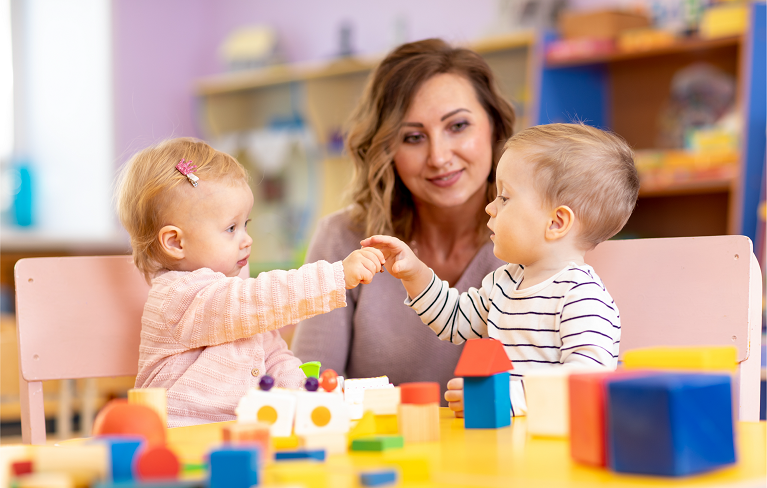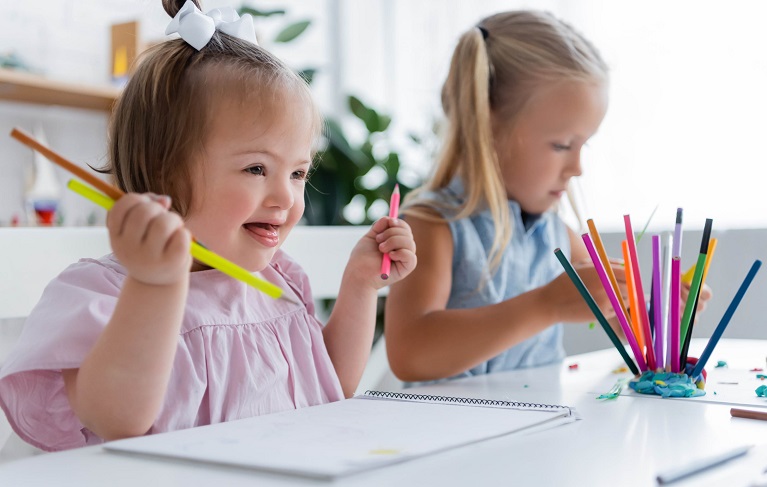4 Steps to Helping Children Learn Specific Skills
PublishedAs you implement the AEPS-3 Curriculum, you may notice that some children are not making expected progress. These children may be unable to participate fully in the routines and activities you select, and you may observe that their mastery of one or more associated skills seems to have stalled.
To identify teaching outcomes to address these children’s needs, you will first need to collect additional assessment information. In this post, we outline four suggestions for pinpointing focused intervention and instruction to help children learn specific skills.
- Use the AEPS-3 Test. If you have assessed only the AEPS-3 goals, start by conducting a more in-depth assessment by testing the objectives associated with the goals on which the child’s development is not progressing. The child may need to learn a specific component skill before learning the more difficult goal. Conducting a fine-tuned assessment will help identify the specific skill components a child might be missing.
- Use the Scoring Notes. Go back to the developmental area(s) of the AEPS-3 Test where the child is not making expected progress and carefully review or collect precise data using the Scoring Notes. Some recurring issues associated with the skills might be causing the child trouble. For example, the child might be able to perform a skill only with particular people and materials or only in certain places. The child might also need a high level of assistance to perform skills correctly. Another possibility is that the child performs a skill, but the quality of performance is unacceptable. In each of these scenarios, you would need to focus your teaching/intervention on the aspect of the skill that is causing the problem (generalization, more independence, improved quality) rather than teaching a new or different skill.
- Use the AEPS-3 FACS. You can help caregivers complete the Family Assessment of Child Skills (FACS) in the areas(s) where the child is struggling to function and participate. Then, use the information gathered from the FACS to identify skills the family considers critical for successful participation in home and community routines and activities. Your intervention/instruction can then focus on the specific skills that both you and the family identify to give the child additional practice and support.
- Group children with similar goals and outcomes. You can use the assessment information from the AEPS-3 Test to identify small groups of children who may need to learn the same skill or skills. By analyzing test data across groups of children, you are likely to see patterns that can help you design intentional small-group activities to focus on the skill(s) that several children need to learn.
By following these four suggestions, you can help young children make progress toward mastery of important skills—and keep their caregivers involved in the process. For more guidance on selecting developmentally appropriate routines and activities for the young children you work with, see Chapter 3 of AEPS-3 Volume 3: Deciding What to Teach.
This post has been adapted from Grisham, J., & Slentz, K. (Eds.). (2022). AEPS®-3 Volume 3: Curriculum—Beginning. In D. Bricker, C. Dionne, J. Grisham, J. J. Johnson, M. Macy, K. Slentz, & M. Waddell, Assessment, Evaluation, and Programming System for Infants and Children, Third Edition (AEPS®-3). Brookes Publishing Co.



